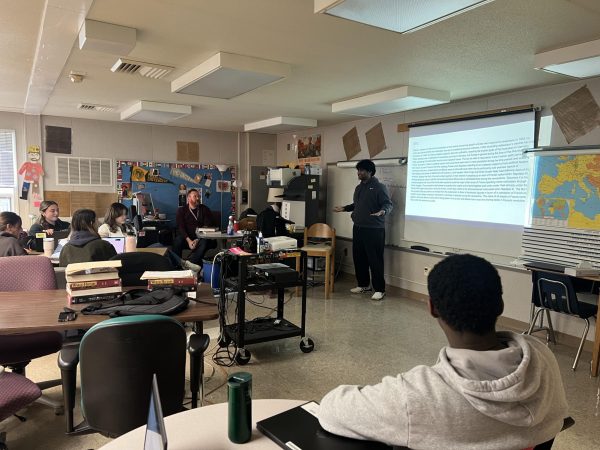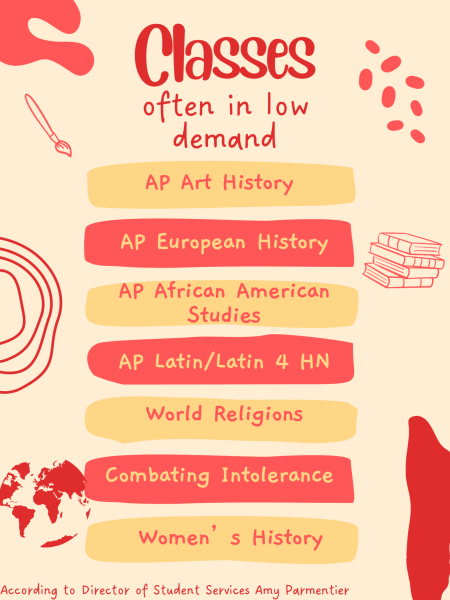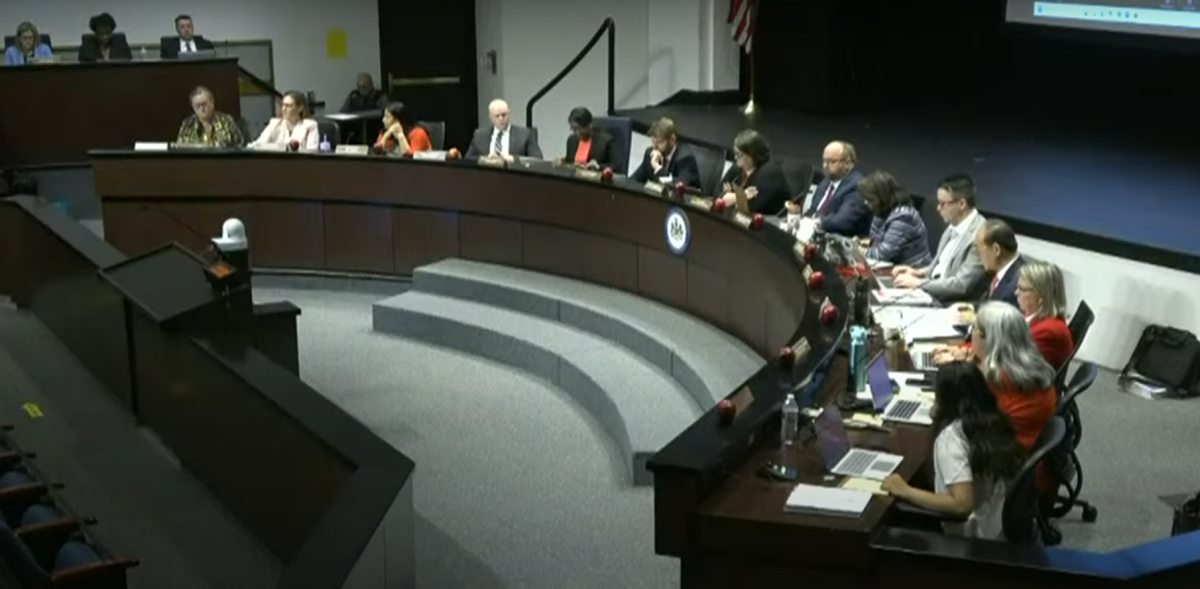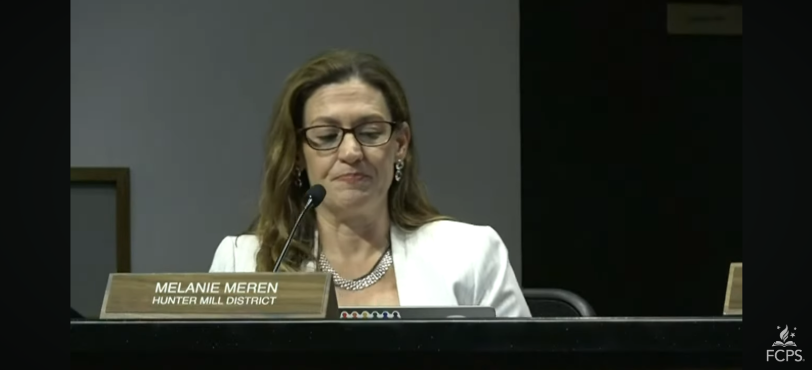Called out of her English class, sophomore Bhavya Chaluvadi visits Subschool one to meet with her counselor and request her courses for junior year. Between November and March, students and staff make decisions concerning the classes that students will take the following year.
Halfway through the first semester, academic departments meet to determine which courses will be offered for the upcoming school year and after winter break, students meet with their counselors to share their interest in certain classes. The process of confirming students’ schedules doesn’t end there, though.
“We have to know how many sections we need for certain classes by March so that we can do our staffing correctly and build the master schedule correctly,” Director of Student Services Amy Parmentier said. “You can change your mind during advising, that’s no problem, but after March 7, we have to say, ‘No more changes.’”
In March, staff determine the number of sections of each course. The number of students in order to run a course also must meet a requirement, which is usually 25. As students fill out their course requests with their counselors, Parmentier reviews them and determines which classes can run, however, nothing is set in stone until academic advising is officially over.
“Sometimes we have [the required] 25 students who initially sign up, but because of scheduling or something along the way, in the end, only 18 are able to fit it into their schedule,” social studies department chair Angie Rollet said. “ So, we end up having to drop that class.”

While numerous departments offer students a wide variety of courses, there are issues related to core classes, electives and staffing. When a course that isn’t offered every year does end up happening, departments have to decide who will teach it. Sometimes, this decision is resolved simply because a teacher volunteers. On other occasions, any teacher who has availability in their schedule may be assigned to the class.
“That doesn’t typically happen here,” Rollet said. ”We usually have people who want to teach these subjects. We think of it as getting to teach these classes as opposed to having to teach these classes.”
Nonetheless, Rollet adds that the county deems it mandatory to offer certain classes, like African American History. In order to encourage students to take specific electives, the school might not offer other electives that will contend with one another, such as women’s history, combating intolerance and AP African American studies. Because of the stipulation that a class must have at least 25 students to run, if student interest is divided between several courses, none of them will run at all.

“We understand that there are some electives that not everyone will want,” Parmentier said. “But if it’s something that’s really important to you, we hope that we’ll be able to offer it.”
These decisions depend on what students want more than any other factor. Even so, some classes cannot accommodate every student who signs up for it. Chaluvadi considers what will happen if she can’t take the courses she would like to.
“If I don’t get in, I do have a few back-ups that I can use that will be helpful for me in the future,” Chaluvadi said. “It’s not going to be the end of the world.”
Counselors advise that students should have at least three back-up courses, especially if an academy class is one of their first choices. Academies make all their decisions independently of the school and cannot guarantee a seat for everyone. Additionally, students’ back-ups should not include only academy classes either; there should be CHS courses as well.
For academy courses, students receive a notification in March clarifying whether that class will likely run and are often requested to fill out a form to reaffirm their interest. For regular courses, students do not have an opportunity to know the classes’ outcome until they receive their schedule in August for the next school year. It’s important for students to accept that they aren’t guaranteed every elective they sign up for and to enroll in back-up courses they are prepared to take.
“If you want to take a class, I wouldn’t recommend trying to get all your friends to take it too, because that class might not be the match for them,” Parmentier said. “Just remember we have a huge range of courses, so just pick things that are genuinely interesting to you.”








